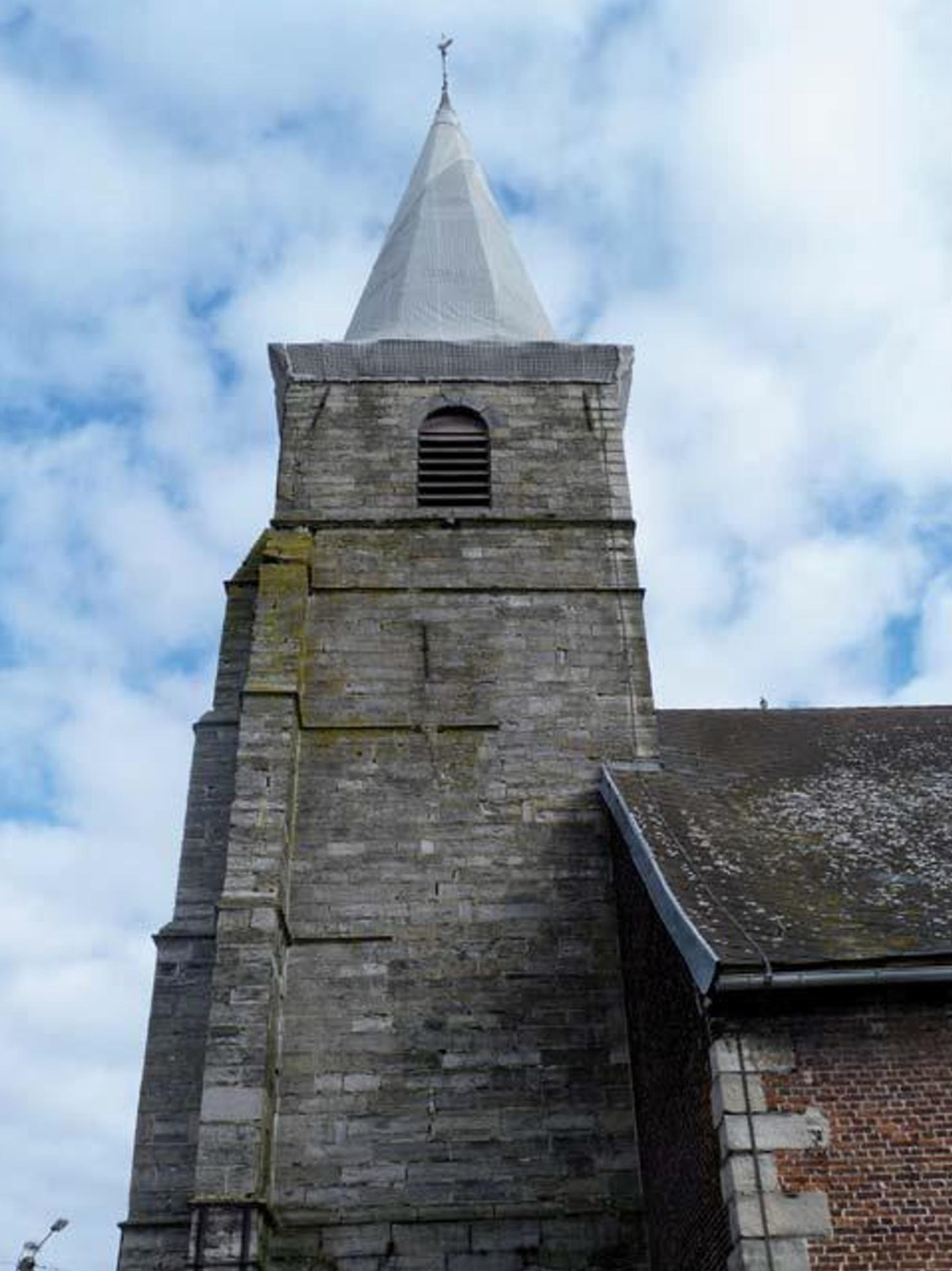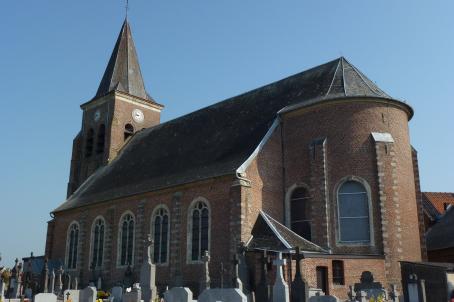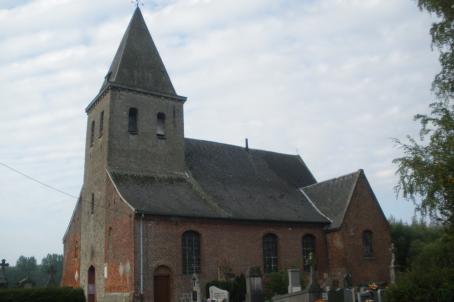Church of Saint-Martin
The church of Saint Martin Flines-lez-Mortagne, in the northern department, dates from the eleventh or twelfth century, but was largely rebuilt in the fourteenth century. Its imposing bell-tower contains both Romanesque and Gothic elements. The interior of the building is richly decorated with statues and medallions with biblical themes.
About this building
Located in Flines-lez-Mortagne in the Hauts-de-France region, the Church of Saint Martin dates from the 11th or 12th century, but was rebuilt in the 14th century in a Gothic style. The first three levels of its bell-tower are made of blue stones and the base walls, more than one meter thick, are original. The last level of the belfry was added later in the Gothic style. The tower was destroyed in the 14th century, then rebuilt in a Romanesque style, so the church tower has the unusual pleasure of marrying two different architectural styles.
The church, built to an elongated plan, ends with a cutaway. The baroque nave and aisles are composed of alternating stained glass windows and pillars with carved capitals. The carved oak stalls were recovered from the monastery of Château-l'Abbaye, after it was destroyed during the Revolution. The stalls were saved and transferred to the Saint Martin church. They date back to the seventeenth century and have been classified since 1977. Made of carved oak, the communion benches are decorated with four medallions representing biblical scenes. At the base of the vault, there are other medallions with biblical themes (Noah's Ark, the Ark of the Covenant, etc.).
In addition to these wonders, eight statues are placed on the capitals of the columns along the nave, among which are the four evangelists. An elegant altarpiece in white marble stands near the altar; it represents the burial of Christ. The interior of the church is also decorated with statues, such as a Saint Martin in solid oak, a tabernacle dating from the fifteenth century and a Saint Hubert.






